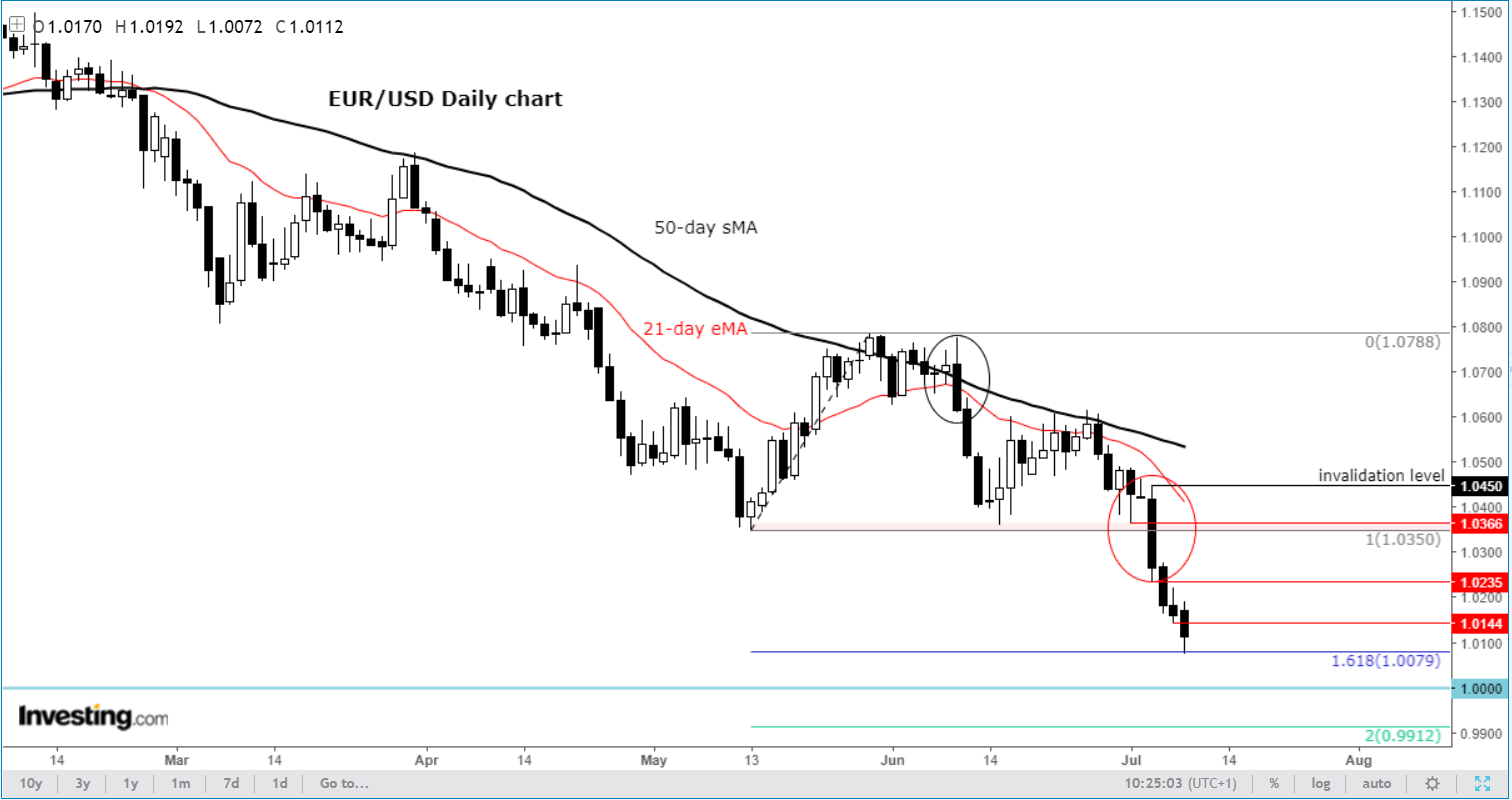With the EUR/USD now on its sixth consecutive down day and just over 1 cent above the key 1.00 handle, it is clearly one of the important charts to watch today as it gets ever closer to parity.
The last time I looked at the EUR/USD on June 10, the world’s most-traded currency pair was trading around 1.06 after it had just formed a large bearish engulfing candle off its 50-day moving average. The ECB had just pre-committed to a 25-basis point hike in July and investors were awaiting the release of US CPI data.
That made me believe the EUR/USD was going to initially drop to 1.0500 before it would revisit the May low at 1.0350.
Well, here we are a few weeks later and the EUR/USD not only has broken 1.0350 but it is on the brink of falling to parity:

The renewed weakness was triggered after the US CPI came out at a new 40-year high of 8.6%. Consequently, the Federal Reserve decided to hike rates by 75 basis points on June 15 and signaled more aggressive tightening was on the way. Meanwhile, the troubles for Eurozone intensified with the release of further bad data from Germany and elsewhere.
Today’s focus on US nonfarm payrolls is unlikely to impact the dollar in a meaningful way, even if the report is quite weak. Only a very poor—negative— number might trigger a dovish re-pricing in the Fed’s rate expectations. Otherwise, a small miss or beat won’t matter much. The more important data for the dollar and the Fed is US CPI, which is due for release next week.
Thus, the EUR/USD remains at risk of dropping to parity, possibly as soon as later on today.
Still, I wouldn’t rule out the potential for some short-covering bounce given the extent of the decline in the EUR/USD. That said, I would concentrate on selling into the rallies at resistance than trying to pick the bottom. Short-term resistance is seen at 1.0145, which is Thursday’s low. Thereafter, the next level for potential resistance is around 1.0235, and then at 1.0350 level that had provided strong support back in May.
I would maintain a bearish view on the EUR/USD until such a time price creates a key reversal pattern. As things stand, the line in the sand for me is at 1.0450, the high of the thrust candle that led to the last breakdown below 1.0350 support. This means that any short-term strength in the interim should be treated as a counter-trend move and thus an opportunity to sell at better levels.
The euro area economy faces mounting headwinds caused by Russia’s war in Ukraine, which has helped to drive record inflation as well as a crunch in natural gas. A recession may not be avoided now. We will hear from a few officials from the ECB later, including President Christine Lagarde. Francois Villeroy, Ignazio Visco and Madis Muller.
A weakening euro means more inflation will be imported in the Eurozone, which is not something desirable right now. Thus, we may hear the ECB officials start talking up the euro, although they will have a hard time convincing the markets given the macro risks all pointing to the downside. Any hawkish rhetoric to lift the currency might fall on deaf ears.
